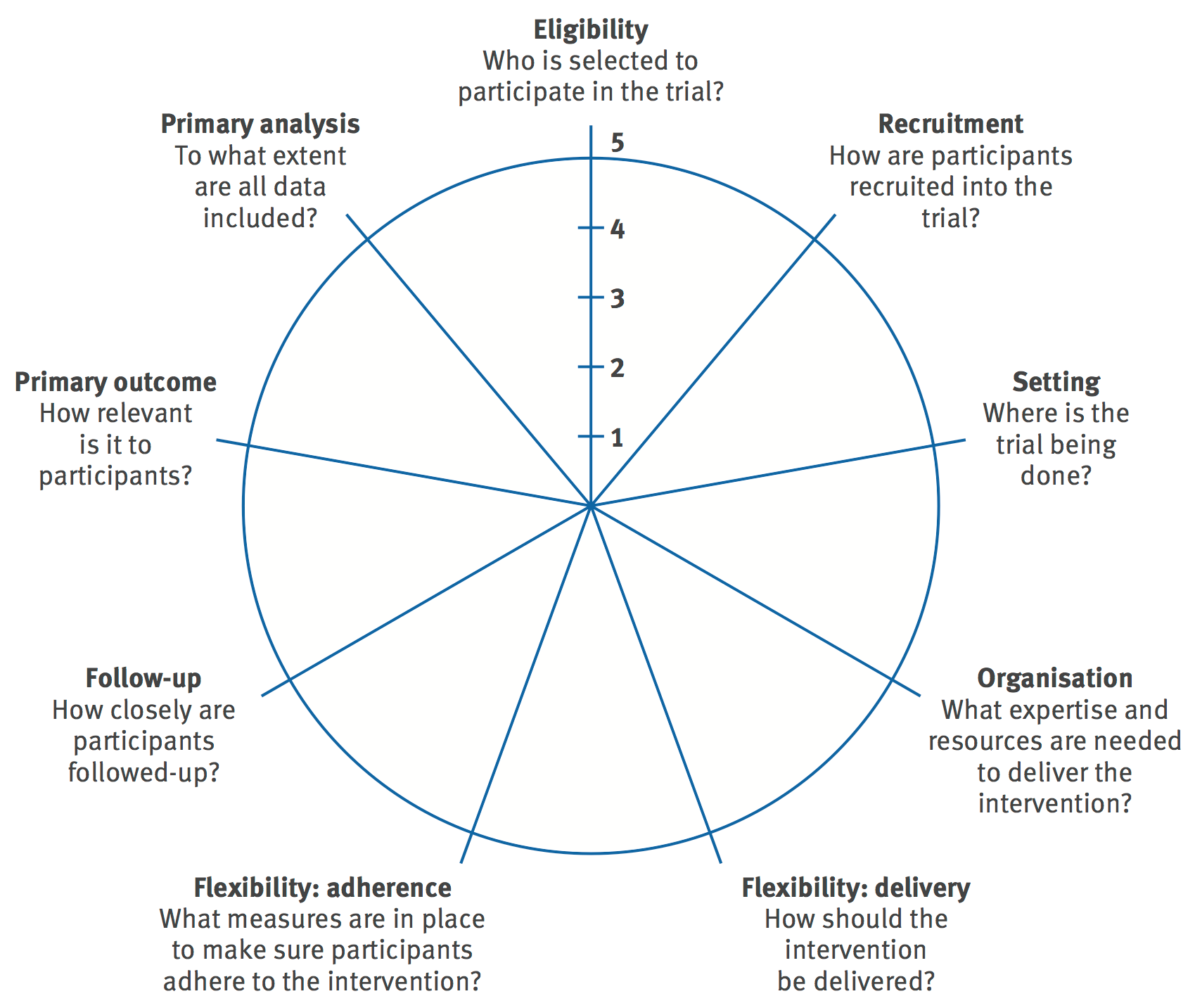In 2009 a tool called the PRagmatic-Explanatory Continuum Indicator Summary – PRECIS - was published to help trialists to think more carefully about the impact their design decisions would have on applicability (Thorpe 2009).
This tool has been improved and validated to create PRECIS-2 (Loudon 2013). This is a 9-spoked ‘wheel’ with nine domains based on trial design decisions (i.e. Eligibility criteria - who is selected to participate in the trial? Recruitment - How are participants recruited into the trial? Setting - Where is the trial being done? Organisation – what expertise and resources are needed to deliver the intervention? Flexibility delivery – How should the intervention be delivered? Flexibility adherence – what measures are in place to make sure participants adhere to the intervention? Follow up – How closely are participants followed-up? Primary outcome – how relevant it is to participants? and Primary analysis – to what extent are all data included?).
The PRECIS-2 ‘wheel’ can visually represent how explanatory/pragmatic a trial is on the pragmatic to explanatory continuum. Trials that take an explanatory approach produce wheels nearer the hub; those with a pragmatic approach are closer to the rim.
All publications using PRECIS-2 must cite the BMJ publication BMJ 2015;350:h2147

The PRagmatic-Explanatory Continuum Indicator Summary 2 (PRECIS-2) wheel.
Adapted from BMJ 2015;350:h2147